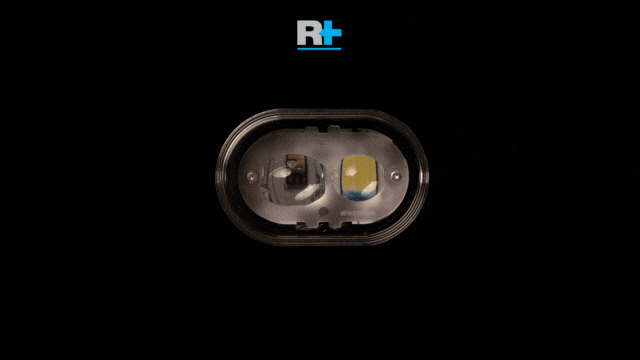As creators of illuminating solutions (for eBikes, motorcycles, and micro-cars), we often find ourselves in a radiant dialogue. No matter how much we immerse ourselves in “copyrighting,” our industry jargon can sometimes dim the clarity. Picture this: when shedding light on a lighting system for your eBike, terms like lumens, lux, and candelas may brighten the conversation. But what’s the real brilliance behind these terms?
In this article, our mission is to light the way, helping you grasp the three vital parameters in defining any lighting system: luminous intensity, luminous flux, and illuminance. Despite these terms initially appearing like distant stars, they’re the guiding lights for understanding the performance of any lighting setup.
Our goal is simple yet radiant: to empower you to make enlightened decisions when choosing lights tailored to your specific needs. It’s about enhancing your safety and preserving the brilliance in your wallet.
Keep reading, and the path ahead will shine brightly—brighter lights, safer rides.

Headlight R+E2-1500 for eBike/Moto
Characterization of a Headlight
The key metrics defining the quality and intensity of a light source include luminous intensity (candela), luminous flux (lumen), and illuminance (lux).

Graphically represented as:

Practical Comparison
While candela values are more related to luminous intensity in a specific direction, they are crucial for signaling and focused lighting. However, for the majority of vehicle users, values in lumens or lux are more relevant. Manufacturers typically provide values in lumens or lux for their e-bike, motorcycle, or car lights, as these metrics are more representative than candela data. Reasons include:
Relevance for the User
Lumens and lux directly matter to end-users, indicating the total emitted light and illuminance on a specific surface, respectively.
Easy Comparison
Lumens and lux enable users to easily compare different products, making informed decisions on lighting that best suits their needs.
Measurement Complexity
Precise candela measurement is complex and requires specialized equipment like goniophotometers. Lumens and lux values are easier to measure and communicate understandably to consumers.
Additionally, an informative section is appended, providing a brief description of devices used for measuring these magnitudes in the annexes.
Selection Criteria for an Ebike/Motorcycle Headlight
Manufacturers often lack candela data for headlights. Key considerations for choosing a headlight include:
Luminous Flux
Lumens alone don’t define quality. Evaluating illuminance (lux) is crucial for understanding light distribution. Identify a headlight that maximizes flux on a specific surface, like the road, for true lighting capacity.
Luminous Efficiency
Efficiency, the ratio of lighting capacity to power consumption, is vital. Opt for lights with high efficiency, especially if using your eBike’s battery as a power source, as it impacts autonomy.
Lighting Modes
Headlights with multiple modes enable adjusting intensity to road conditions and riding speed, enhancing safety and extending eBike autonomy.
Uniformity of Light Beam
The image below shows two light beams from the same R+E2-1500 headlight in low beam mode (left / 1250lm / 330lx) and high beam mode (right / 1550lm / 420 lx).
The low beam mode, despite having a lower luminous flux (19%) and lower illuminance (21%) than the same light in high beam mode, distributes the light beam more uniformly over a smaller area (closer to the rider), providing greater safety for the cyclist. Activating the high beam mode illuminates a much larger area (right) without a noticeable decrease in brightness.

Comparison between short/long light modes in the same eBike headlight.
Power Supply Capacity
Most eBikes on the market have one or two power outputs to supply accessories like headlights, rear lights, or other peripherals. These power outputs have reasonable but limited amperage/power, so installing a high-power headlight is futile if your system lacks the available power for it.
Below is a table detailing the power output characteristics of the most popular electric bicycle systems and their compatibility with Rothmans Electric range systems.

Comparison table of power in common eBike systems and compatibility with R+Electric range
Conclusion
Choosing a lighting system for your ebike or motorcycle extends beyond a simple decision. Apart from weighing the balance between price and safety, practical considerations such as installation, the need for an additional battery, weight, available modes, and features like Daytime Running Light (DRL) come into play. Technical aspects like luminous performance and consumption are equally crucial.
To make informed decisions, grasp the technical features of the headlight, including its illumination capacity in lux and lumens. We recommend opting for certified systems that draw power directly from your ebike’s battery, avoiding frequent recharges, portable batteries, and additional weight. Use the manufacturer-recommended cables, paying attention to connector compatibility and polarity with your ebike’s power outlet.
Opt for systems offering multiple lighting modes to adjust intensity based on traffic and light conditions. The inclusion of Daytime Running Light (DRL) is advantageous, especially with the efficiency of LED technology, which minimally impacts autonomy. Before finalizing your choice, grasp the available energy for lighting on your bike/motorcycle, consulting the manufacturer, specialized magazines, or reliable suppliers.
If you’re looking to follow these recommendations without breaking the bank, consider systems like the R+E2 and R+E6 headlights. These maximize lumens and lux without exceeding the available power limit, featuring a high beam mode with 1550 lumens/420 lux and a minimal 14W consumption. Starting from 206€ + taxes and shipping.
Rothmans Electric: Brighter Lights, Safer Rides.

Image: Rothmans R+E2 add

